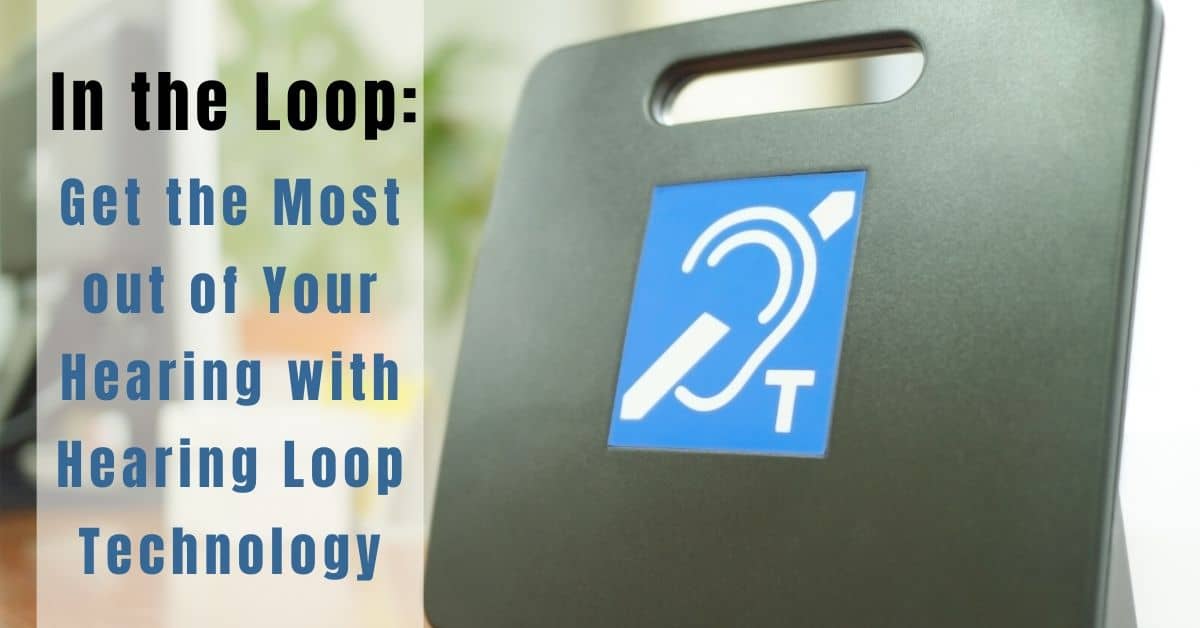- Why You Shouldn’t Do Anything With Your Earwax - April 22, 2024
- Travel Tips for People with Cochlear Implants - April 7, 2024
- How To Have A Great Conversation With People With Hearing Loss - March 22, 2024
Have you ever been in a public space and seen a cryptic sign of an ear with a line running through it and the letter T? For those who do not know, this sign indicates that hearing loop technology is nearby. This form of technology comes in many different names—also called an audio induction loop or Telecoil—and the range of service depends on the place where it is used, as well.
Although we find a variety of applications, the general principle of hearing loop technology is the same. This service is used to reduce background noise, and you might even compare it to having audio wirelessly streamed to your hearing aids as if they were earbuds. Let’s learn a bit about the hearing loop, how it works, and if you can benefit from it, as well.
How Do Hearing Loops Work?
The term “hearing loop” refers to a hardwired loop around an area that creates a magnetic field of amplification. We have become accustomed to wireless technologies that use satellites to bounce signals across long distances. However, hearing loops are an older technology that was used to similarly amplify sound with a wireless function. The hearing loop consists of several important components.
First, a microphone is used by a speaker, whether that person is giving a public address at a town hall meeting, a religious leader in a service, a bank teller, or a lecturer in an educational setting. This microphone is connected to an amplifier that processes the sound to “the loop.” Finally, the technology uses a hardwired loop around an area to act as an antenna that radiates a magnetic signal to hearing aids. The space inside the loop might be small, as is the case with a bank teller’s station, or it might be very large like a courtroom or a church sanctuary.
In any case, the loop is effective to broadcast the sound from the microphone to anyone with compatible technology without the added background noise of the room.
Can I Connect to the Loop with My Hearing Aids?
Traditionally, hearing aids amplify all the sound in a space, reproducing the entire sonic environment. The latest hearing aids have become better at isolating the frequencies that you need to hear most, including the sound of the human voice. However, they still have a long way to go in that regard.
The benefit of the hearing loop is that it completely isolates the sound of the human voice speaking into the microphone, and you can imagine it almost like having a podcast streamed wirelessly into your hearing aids. Depending on your hearing aids, you may have a way to select the “telecoil” setting. Once you have done so, your aids will be able to link into the magnetic field created by the hearing loop. This connection is usually a simple flip of a switch or even a setting through your smartphone app if you have hearing aids with Bluetooth connectivity, making it simple to switch between modes. However, you will need to remember to switch off the telecoil setting after you leave the loop, re-engaging with amplified ambient sound in the environment.
If you have a business or venue that could benefit from this technology, you can find out more information through the International Hearing Loop Manufacturers Association (IHLMA). This organization can connect you with more information about the loop installation services in your area and the right format for your needs.
The cost has a wide range depending on the size of the loop, and small loops at pharmacies, banks, and other sites of one-on-one interaction can be quite affordable. Hearing loops are also compatible with the Americans with Disabilities Act, and there may even be financial incentives for your organization to add this accommodation for people who are hard of hearing.
With the many benefits of hearing loop technology, why not consider the ways that you can serve the hearing loss community in your area? Those who use hearing loop technology report vastly higher satisfaction rates than with using traditional hearing aids for situations of public address, and you can take this step toward better communication.

